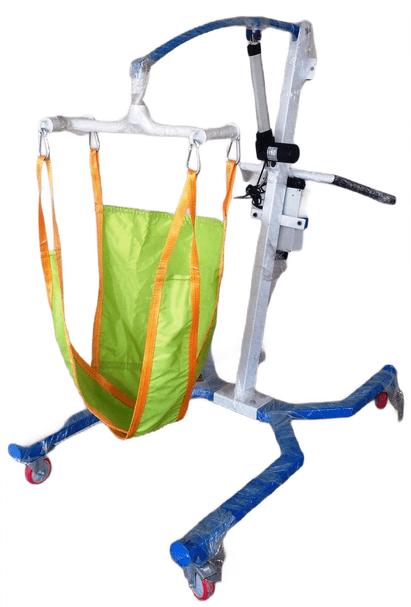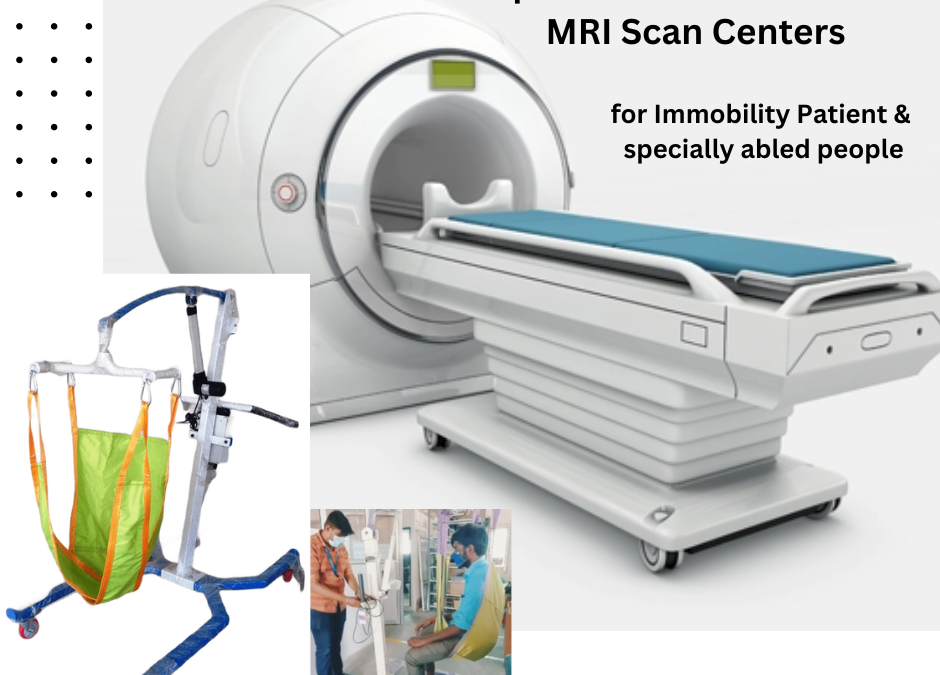Introduction: In the realm of healthcare, providing equal access and quality care for all patients is of utmost importance. Immobility and physical limitations can pose significant challenges, especially for individuals with disabilities or special needs. However, advancements in technology have paved the way for innovative solutions that promote inclusivity and ease within medical environments. One such groundbreaking development is the patient hoist lifter, a remarkable device that has revolutionized the way immobility patients and specially abled individuals undergo MRI scans and laboratory procedures. In this blog, we will explore the benefits and significance of patient hoist lifters in MRI scan and lab centers.
Enhancing Accessibility:
MRI scans and lab tests are crucial diagnostic tools utilized in healthcare facilities worldwide. However, for individuals with limited mobility, the process can be daunting, uncomfortable, and sometimes impossible without proper assistance. Patient hoist lifters have emerged as a game-changer, offering a viable solution to address these challenges. These innovative devices provide a safe and efficient means of transferring immobility patients onto MRI tables or examination chairs, enabling them to undergo diagnostic procedures comfortably and without distress.
Promoting Safety and Comfort:
Patient hoist lifters prioritize the safety and well-being of immobility patients and specially abled individuals. Traditional transfer methods often involve manual lifting, which can lead to strain and injuries for both patients and healthcare professionals. Hoist lifters eliminate the need for manual handling, significantly reducing the risk of accidents, falls, and musculoskeletal injuries. The lifting process is smooth, controlled, and minimally intrusive, ensuring maximum comfort for patients throughout their MRI scans or laboratory tests.
Customized Solutions for Unique Needs:
Every patient is unique, and their requirements may vary based on their condition or physical limitations. Patient hoist lifters are designed to cater to these diverse needs. With adjustable features such as height, seating positions, and specialized slings, hoist lifters can accommodate patients of different body types and sizes, ensuring optimal support and stability during transfers. This versatility enables healthcare providers to deliver personalized care to immobility patients and specially abled individuals, ensuring their dignity and comfort are prioritized throughout their medical journey.
Time and Efficiency:
In addition to enhancing patient comfort and safety, patient hoist lifters also contribute to increased efficiency within MRI scan and lab centers. These devices streamline the transfer process, reducing the time required for patient preparation and facilitating quicker transitions between procedures. This not only benefits the patients but also optimizes the workflow of medical professionals, allowing them to provide care to more patients in a timely manner.

Embracing Inclusivity:
By incorporating patient hoist lifters into MRI scan and lab centers, healthcare facilities send a powerful message of inclusivity and accessibility. These devices empower immobility patients and specially abled individuals, granting them the opportunity to undergo vital diagnostic tests without limitations or discomfort. Additionally, patients and their families experience peace of mind, knowing that their needs are being met in a compassionate and comprehensive manner.
Patient hoist lifters have emerged as a transformative solution for immobility patients and specially abled individuals in MRI scan and lab centers. By prioritizing safety, comfort, and inclusivity, these devices have revolutionized the healthcare experience for individuals with physical limitations. Through the implementation of patient hoist lifters, healthcare facilities foster a culture of equal access, ensuring that every patient, regardless of their mobility, receives the care they deserve. As technology continues to evolve, we can look forward to even more innovative solutions that promote inclusivity and revolutionize healthcare practices for all.

